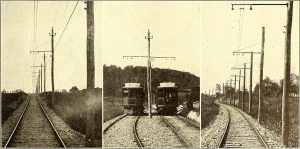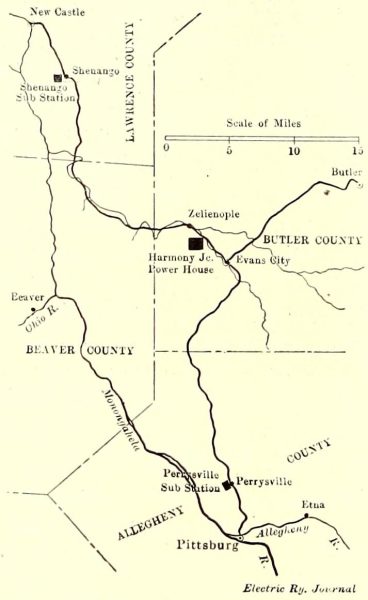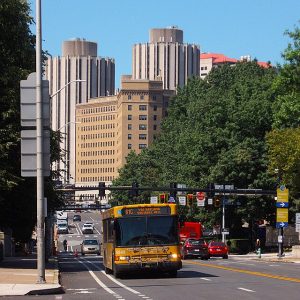When you need to go to your friend’s house, how do you get there? What if you want to grab a bite to eat? Or if you want to do some shopping. For most NA students, the chances are there’s one overwhelming answer: the car.

Yes, we North Hills residents are in love with our automobiles. Whether you yourself drive, you carpool, get driven by parents, or even call an Uber, these machines have a stranglehold on our lives. But just 20 minutes south in the city, things aren’t so car-centric. How did we get here?
In most urban centers around the US, and the world at large, residents don’t need a car. In fact, many small towns in the U.S. are not car-dependent. People can walk, bike, ride a bus or a train, all without needing to saddle themselves with the costs and responsibilities that come with owning a car.
That’s because large city centers weren’t built in one fell swoop. They were designed first and foremost for people and horse-drawn carriages, in sputtering stages long before automobiles became commonplace. Retail, dining, and residential all co-exist within a close radius of one another. But as cities grew and became overcrowded, and with the advent of the affordable automobile in the early 1920s, people began yearning for wide open spaces to settle down.
In 1976, after over two decades of staged construction, the final segments of Interstate 79 opened to traffic, creating a seamless connection between Erie and West Virginia. One of the two final segments to open was exits 60 to 78, running straight through the heart of NA. The floodgates were now open for thousands of city-dwelling families to make the trek north for a quieter life.
Vast swathes of farmland and forest were bought up and developed throughout the 1960s and 70s using a radical new design philosophy–cars first, people second. Houses were all built clustered together in “plans” by one real estate developer at the same time. Sprawling indoor and outdoor shopping malls of national chains became the norm for retail. Fast food drive-thrus and massive gas stations began to dot the landscape. And all of this was being linked by wide roads with little to no room for anything but cars.
And so, today, we suburbanites are left isolated. Zoning laws create restrictions on what can be built and where. Retail and residential rarely mix in an organic way in the suburbs of the north, meaning to get to any points of interest, you need to drive. Walking is impractical, because not only are the walks absurdly long by virtue of wide lawns and unconnected housing plans, but the conditions for pedestrians are less than ideal. Route 19 has a sidewalk, yes, but anybody who’s walked on it knows how harrowing it can be when a steady stream of car whizzes past.
This is of particular concern to high school students, many of whom do not drive. Most students get their licenses in their senior year, leaving them with two options: beg their parents for a ride, or somehow take the grueling walk to where they need to go.
Public transportation isn’t a viable option, either. The North Hills of Pittsburgh has only four bus routes, which run infrequently and often unreliably. Even then, visibility for these routes is so low that I’m willing to bet most readers didn’t even know we had four.

All this complaining without any solutions does nobody any good, though. It can be hard to look past our love for cars because, for those of us who’ve lived in this area our entire lives, it’s all we know. The task of adapting such a sprawling, confusingly connected area can seem like an insurmountable task, but there are steps we can take to make the North Hills more livable.
Before anything can be done, zoning laws need to be changed. New developments should have room for residential and commercial space alike. This will encourage residents of these areas to walk or bike to their local shops instead of making the 10-15 minute commute to any of the large shopping centers that dominate the area now.
The explosive growth of the 60s and 70s is still alive and well in 2024. It seems like every time I go out driving, I see a new housing plan springing up. If you look at historic aerials of the area, you can see that we’ve slowly been whittling away at what little space we have left. So, another change we can make to zoning laws is allowing multi-family housing. This can come in the form of apartments, smaller townhouses, or condos. We may have to sacrifice our nice, big manicured lawns for these new developments, but it’s a sacrifice we need to make if we want to sustain the growth we have benefited so much from over the last 50 years.
Next, we need to beef up the bus system. Right now, buses run almost exclusively on Route 19–a large artery for cars already–and to North Park, which, while helpful for leisure, provides little opportunity for travel to commercial areas. Adding more bus routes in the residential areas could help pull people away from cars, especially high schoolers who don’t have the means to get around by themselves.
All these bus routes won’t do us any good if we can’t get people out of their cars, though. So I also propose something some readers might find radical–car free zones. Case studies in cities across the US have shown that shutting off streets to automobile traffic has significantly boosted foot traffic for local businesses in those areas.

These zones would be difficult to implement here, however. The structure of the North Hills is far different from that of downtown Toronto or Seattle. Plus, existing retail spaces centered around cars would be challenging to sanction off for pedestrians only. But new developments are still springing up in the 2020s, so why not try some pedestrian-only areas?
To us NA students, some of these changes might seem arbitrary. One must simply point to the NASH parking lot on a weekday at 2:20 to see just how much we all love our cars. And to be sure, most license-carrying teenagers may be irked by a call to reduce our dependency on automobiles.
But as a culture, we are more isolated than we’ve ever been.
Imagine, if you can, a world where you don’t need to ask your parents for a ride, or drive 15 minutes each way to meet your friends for lunch. A world where you can comfortably walk or bike a mile to your favorite store. Where you can visit your friend by just walking the length of a football field. It may seem out of reach, but other metropolitan areas have seen great success implementing similar policies. Maybe it’s time the North Hills of Pittsburgh caught up.



